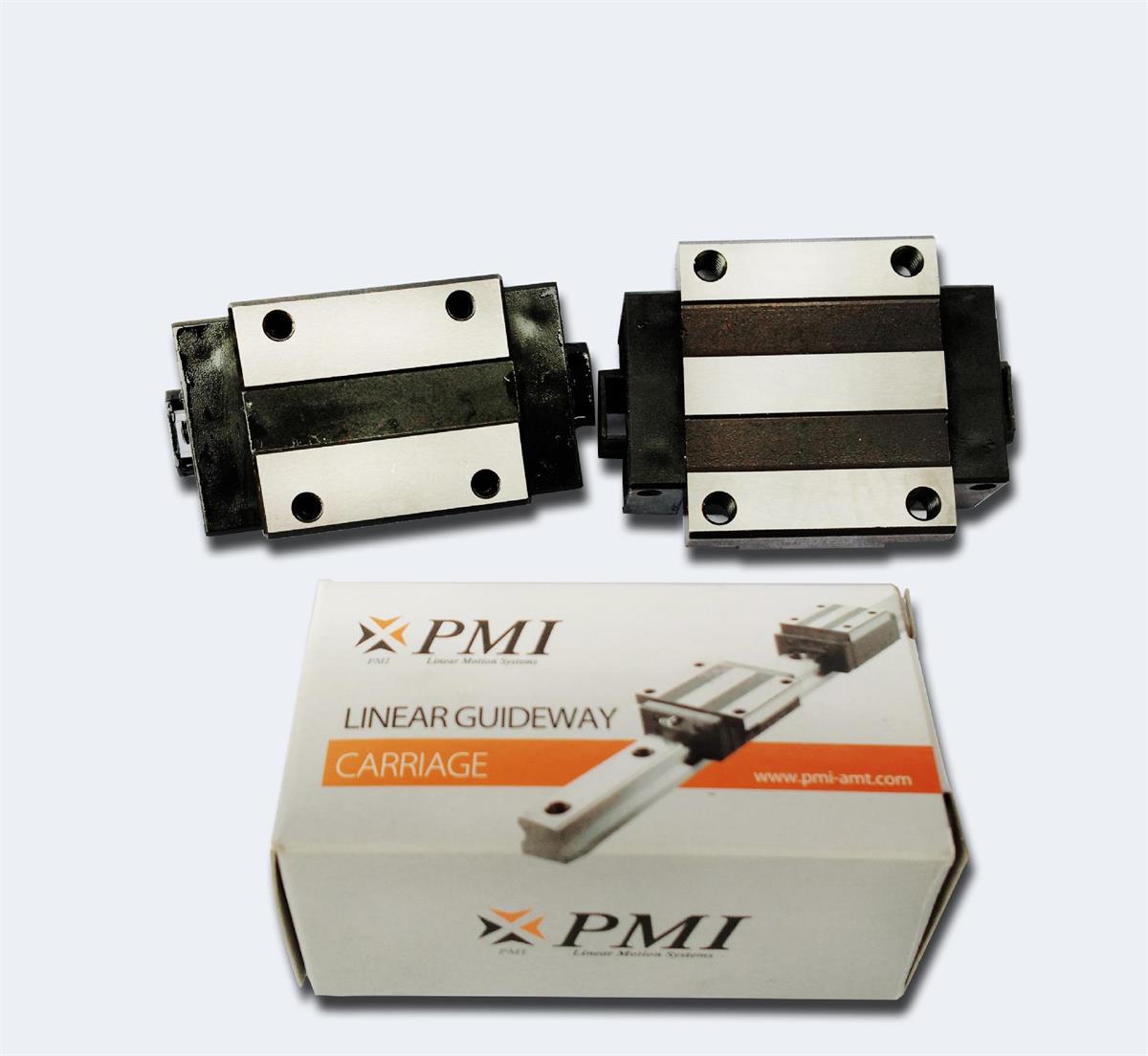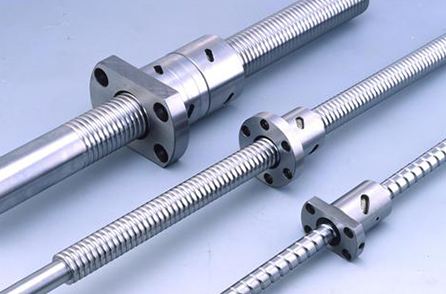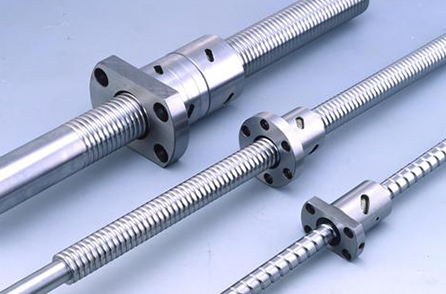导轨平行安装的调整方法与实操要点
来源:http://www.jngongrun.com/ 日期:2025-07-30 发布人:
导轨作为各类机械运动和门窗系统的导向结构,其平行度直接影响设备运行的稳定性、顺畅度与使用寿命。无论是卷帘门、电梯轿厢还是工业流水线的导轨,平行安装调整都需要精准控制间距误差、垂直度与水平度,任何细微偏差都可能导致运行卡顿、局部磨损加剧或噪音增大。以下从准备工作、分步调整、校验方法到常见问题处理,系统解析导轨平行安装的调整逻辑与实操技巧。
As a guiding structure for various mechanical movements and door and window systems, the parallelism of guide rails directly affects the stability, smoothness, and service life of equipment operation. Whether it is roller shutter doors, elevator cars, or industrial assembly line guides, parallel installation and adjustment require precise control of spacing errors, verticality, and levelness. Any slight deviation may lead to operational lag, increased local wear, or increased noise. The following provides a systematic analysis of the adjustment logic and practical skills for parallel installation of guide rails, from preparation work, step-by-step adjustment, verification methods to common problem handling.
调整前的准备工作与工具选择
Preparation and tool selection before adjustment
导轨平行安装调整前,需先完成基础检查与工具准备。首要任务是确认安装基面的平整度,使用 2 米靠尺检测地面或墙面的凹凸程度,若误差超过 3mm/m,需先用水泥砂浆或垫片找平 —— 不平整的基面会直接导致导轨安装后产生应力,影响平行度的长期稳定性。对于墙面安装的导轨(如卷帘门、推拉门),还需检查墙体的垂直度,避免因墙体倾斜造成导轨 “被动歪斜”。
Before adjusting the parallel installation of the guide rail, it is necessary to complete the foundation inspection and tool preparation. The primary task is to confirm the flatness of the installation base surface, using a 2-meter ruler to detect the unevenness of the ground or wall surface. If the error exceeds 3mm/m, it is necessary to first level it with cement mortar or gaskets - an uneven base surface will directly cause stress after the installation of the guide rail, affecting the long-term stability of parallelism. For wall mounted guide rails (such as rolling shutter doors and sliding doors), it is also necessary to check the verticality of the wall to avoid "passive tilting" of the guide rails caused by wall inclination.
工具选择需兼顾精度与实用性。核心工具包括:2 米激光水平仪(精度 ±0.5mm/m)用于校准水平与垂直;5 米钢卷尺(误差≤1mm)用于测量间距;线坠(重量≥500g)辅助检测垂直度;塞尺(0.02-1mm 规格)用于测量缝隙偏差;以及一组不同厚度的金属垫片(0.5mm、1mm、2mm、5mm)用于微调高度。此外,还需准备木工铅笔、记号笔、手电钻与膨胀螺栓,确保调整后能快速固定。
Tool selection should balance accuracy and practicality. The core tools include a 2-meter laser level (accuracy ± 0.5mm/m) for calibrating horizontal and vertical alignment; 5-meter steel tape measure (error ≤ 1mm) is used to measure spacing; Use a plumb bob (weighing ≥ 500g) to assist in detecting verticality; A feeler gauge (0.02-1mm specification) is used to measure gap deviation; And a set of metal pads of different thicknesses (0.5mm, 1mm, 2mm, 5mm) are used to fine tune the height. In addition, woodworking pencils, markers, electric drills, and expansion bolts need to be prepared to ensure quick fixation after adjustment.
环境因素也需提前考量。温度变化会导致金属导轨热胀冷缩,调整应避开极端高温或低温时段,若在冬季施工,需预留 0.1-0.2mm/m 的温度补偿间隙;潮湿环境下,调整前需清理导轨表面的锈迹与油污,防止垫片打滑影响调整精度。
Environmental factors also need to be considered in advance. Temperature changes can cause thermal expansion and contraction of metal guide rails. Adjustments should avoid extreme high or low temperature periods. If construction is carried out in winter, a temperature compensation gap of 0.1-0.2mm/m should be reserved; In humid environments, it is necessary to clean the rust and oil stains on the surface of the guide rail before adjustment to prevent the gasket from slipping and affecting the adjustment accuracy.
基准导轨的设定与初步固定
Setting and preliminary fixation of reference guide rail
平行安装的关键是先确立基准导轨,以此为参照调整另一根导轨。选择其中一根导轨作为基准时,需优先考虑安装面的稳定性 —— 若两侧墙面或地面平整度存在差异,应选择基面更平整的一侧作为基准。基准导轨的固定需分两步:先用临时支架将导轨初步固定,确保其顶面与设计标高一致,再用激光水平仪校准其垂直度(偏差需≤1mm/m),垂直度调整可通过在导轨底部加减垫片实现,每调整 1mm 垂直度约需增减对应厚度的垫片。
The key to parallel installation is to first establish a reference rail, which can be used as a reference to adjust the other rail. When selecting one of the guide rails as the reference, priority should be given to the stability of the installation surface - if there is a difference in the flatness of the walls or floors on both sides, the side with a flatter base surface should be selected as the reference. The fixation of the reference guide rail needs to be divided into two steps: first, use a temporary bracket to preliminarily fix the guide rail to ensure that its top surface is consistent with the design elevation, and then use a laser level to calibrate its verticality (deviation should be ≤ 1mm/m). The verticality adjustment can be achieved by adding or removing shims at the bottom of the guide rail. For every 1mm verticality adjustment, the corresponding thickness of shims needs to be added or removed.

基准导轨的水平度调整同样重要。对于地面安装的导轨(如流水线轨道),将激光水平仪投射到导轨顶面,若显示存在倾斜,松开临时固定螺栓,在较低一侧的支架下增加垫片,直整根导轨的水平误差控制在 0.5mm/m 以内。墙面安装的垂直导轨(如卷帘门导轨)则需用线坠检测全高垂直度,从顶部到底部的偏差应≤3mm(针对 3 米长导轨),调整时通过拧动膨胀螺栓的松紧度,配合撬棍微调导轨位置,待线坠与导轨侧面的间隙均匀后,拧紧紧固螺栓但不拧死,为后续微调预留空间。
The horizontal adjustment of the reference rail is equally important. For ground mounted rails (such as assembly line tracks), project the laser level onto the top surface of the rail. If there is a tilt displayed, loosen the temporary fixing bolts and add shims under the lower bracket until the horizontal error of the entire rail is controlled within 0.5mm/m. Vertical guide rails installed on the wall (such as roller shutter door guide rails) need to be checked for full height verticality with a plumb bob. The deviation from top to bottom should be ≤ 3mm (for 3-meter-long guide rails). When adjusting, adjust the position of the guide rail by tightening the expansion bolt and using a pry bar to fine tune it. After the gap between the plumb bob and the side of the guide rail is uniform, tighten the fastening bolt but do not tighten it to reserve space for subsequent fine adjustments.
水平与垂直方向的平行度调整
Horizontal and vertical parallelism adjustment
基准导轨固定后,即可进行第二根导轨的平行度调整,核心是控制 “三维偏差”:水平间距偏差、垂直高度差与立面垂直度偏差。水平间距调整需在导轨两端及中点三个位置测量,以卷帘门导轨为例,假设设计间距为 800mm,需确保两端测量值均为 800mm±1mm,中点测量值与两端的差值≤0.5mm—— 若中点间距偏大,说明导轨中部向外弯曲,需在中部支架处向内施加微调力;若间距偏小,则需向外顶推,调整时可用 C 型夹配合木块缓慢施力,避免用力过猛导致导轨变形。
After fixing the reference guide rail, the parallelism adjustment of the second guide rail can be carried out, with the core being to control the "three-dimensional deviation": horizontal spacing deviation, vertical height difference, and vertical deviation of the facade. Horizontal spacing adjustment needs to be measured at three positions: the two ends and the midpoint of the guide rail. Taking the roller shutter door guide rail as an example, assuming the design spacing is 800mm, it is necessary to ensure that the measured values at both ends are 800mm ± 1mm, and the difference between the midpoint measurement value and the two ends is ≤ 0.5mm. If the midpoint spacing is too large, it indicates that the middle of the guide rail is bent outward, and a fine adjustment force needs to be applied inward at the middle bracket; If the spacing is too small, it needs to be pushed outward. When adjusting, a C-clip can be used to slowly apply force with a wooden block to avoid excessive force causing deformation of the guide rail.
垂直方向的平行度控制需同步关注高度差与垂直度。使用激光水平仪在两根导轨的同一高度投射水平线,测量导轨顶面与水平线的距离,两端高度差应≤1mm,否则需通过底部垫片调整。垂直度调整需保证两根导轨的 “倾斜方向一致”,用激光水平仪分别检测两根导轨的垂直度,若基准导轨垂直度为 0.5mm/m(向左侧倾斜),则第二根导轨的垂直度需控制在 0.5mm/m±0.3mm/m 且倾斜方向相同,避免形成 “八字形” 或 “倒八字形” 偏差 —— 这种对称偏差看似间距均匀,实则会导致运动部件(如门体、滑块)两侧受力不均。
The control of parallelism in the vertical direction requires simultaneous attention to the height difference and perpendicularity. Use a laser level to project a horizontal line at the same height on two guide rails, and measure the distance between the top surface of the guide rail and the horizontal line. The height difference between the two ends should be ≤ 1mm, otherwise it needs to be adjusted through the bottom gasket. The verticality adjustment needs to ensure that the "tilt direction" of the two guide rails is consistent. Use a laser level to detect the verticality of the two guide rails separately. If the verticality of the reference guide rail is 0.5mm/m (tilted to the left), then the verticality of the second guide rail should be controlled within 0.5mm/m ± 0.3mm/m and the tilt direction should be the same to avoid the formation of a "figure eight" or "inverted figure eight" deviation - this symmetrical deviation may seem evenly spaced, but it can actually cause uneven stress on both sides of moving parts (such as doors and sliders).
对于长于 6 米的导轨,需采用分段调整法。每 3 米设置一个调整点,先固定两端,再调整中间段,避免因导轨自身挠度影响整体平行度。调整过程中需多次往返测量,因为某一部位的调整可能引发其他部位的连锁变化,尤其是刚性较差的薄壁导轨,需耐心微调全段偏差趋于一致。
For guide rails longer than 6 meters, segmented adjustment method should be used. Set an adjustment point every 3 meters, fix both ends first, and then adjust the middle section to avoid affecting the overall parallelism due to the deflection of the guide rail itself. Multiple back and forth measurements are required during the adjustment process, as adjusting one part may cause chain changes in other parts, especially for thin-walled guide rails with poor rigidity, which need to be patiently fine tuned until the deviation of the entire section tends to be consistent.
本文由导轨丝杠友情奉献.更多有关的知识请点击:http://www.jngongrun.com真诚的态度.为您提供为的服务.更多有关的知识我们将会陆续向大家奉献.敬请期待.
This article is a friendly contribution from the guide screw For more information, please click: http://www.jngongrun.com Sincere attitude To provide you with comprehensive services We will gradually contribute more relevant knowledge to everyone Coming soon.
 导轨丝杠:从设计结构...<>
导轨丝杠:从设计结构...<> 大型丝杠的性能设计介...<>
大型丝杠的性能设计介...<> 梯形丝杠和滚珠丝杠的...<>
梯形丝杠和滚珠丝杠的...<> 滚珠丝杆目前的行业的...<>
滚珠丝杆目前的行业的...<> 滚珠丝杠螺母油封更换...<>
滚珠丝杠螺母油封更换...<>



